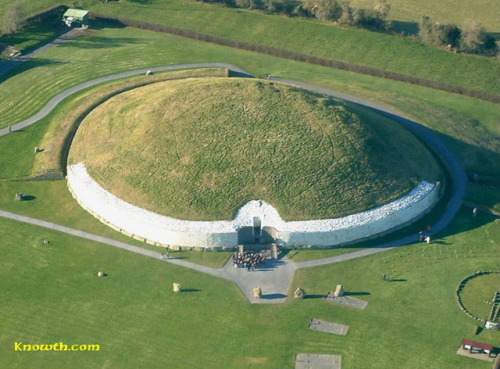
Often called “Ireland’s Stonehenge,” Newgrange is a prehistoric stone monument constructed around 3200 BCE by the Neolithic inhabitants of what is now County Meath. The mound is truly monumental, covering about two acres! Under the grass-covered dome is a 62-foot tunnel which leads to a central chamber, where stone basins house cremated remains. Newgrange appears to have been used as a burial place or ritual site for about a thousand years before falling into disuse and slowly being forgotten. It was only rediscovered in 1699.
One reason why historians continue to debate Newgrange’s purpose, despite the archaeological evidence of both cremated and unburnt human remains, is the monument’s architecture. Newgrange’s prehistoric builders designed it so that every winter solstice — the shortest day of the year — the rising sun shines through a “roof box” near the entrance, filling the main passageway and the inner chamber with light.
Why build something so architecturally sophisticated if it were only entered to place the dead? Many archaeologists, therefore, think Newgrange served a ritual site as well as a tomb.
Nenhum comentário:
Postar um comentário